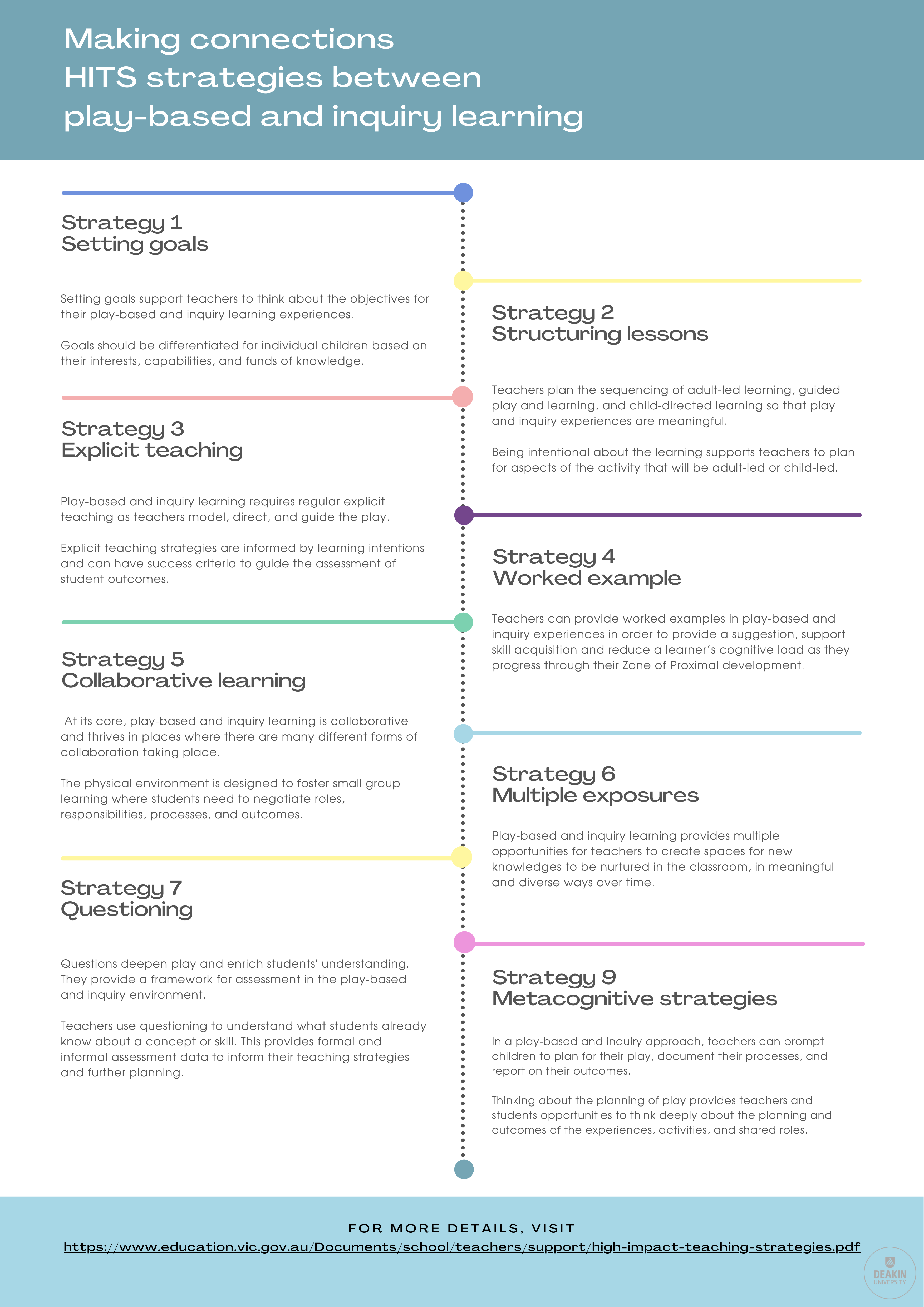Play-based and inquiry learning supports High Impact Teaching Strategies (HITS)
In Module 1 we examined how play-based and inquiry learning supports the implementation of
High Impact Strategy 10: Differentiated Teaching (2020). Let’s have a closer look at how an additional eight
 HITS can be implemented in a play-based and inquiry learning approach through a range of teacher roles examined in this module. Please note we will focus on HITS 8 in Module 3.
HITS can be implemented in a play-based and inquiry learning approach through a range of teacher roles examined in this module. Please note we will focus on HITS 8 in Module 3.
Interacting with HITS
In the interactive experience below, you are encouraged to think about HITS in relation to play-based and inquiry learning approaches.
Key video information
 Here is an infographic that summarises the information you viewed in the above interactive videos.
Here is an infographic that summarises the information you viewed in the above interactive videos.
You can download an A3 sized copy of this
 Making Connections poster to support you with your further planning.
Making Connections poster to support you with your further planning.
Teacher perspectives on play-based and inquiry learning experiences
A Foundation teacher describes how sometimes sitting back and noticing the students, can be the most effective strategy to inform planning.
“...It’s a bit of trial and error, sometimes you don’t hit it right... just knowing the [student] builds up an understanding. I think teachers need to sit back and take the lead from the children and then you know what will provide some challenge for them.” (Dockett and Fleer, 2002, p. 189)
In the video below, consider how teachers can use interactions, planning and teaching strategies in an integrated way to support students’ learning in a play-based and inquiry learning approach.
Pulling the threads together
The teacher’s role is critical in a play-based and inquiry learning classroom. A purposeful balance of child-directed, adult-led and guided play is more effective for students’ learning in a play-based and inquiry learning approach, than adult-led teaching only (DET, 2017).
(DET, 2017).
By integrating child-directed, adult-led and guided play, teachers are able to implement a variety of HITS to support students to engage in stimulating and motivating learning.